Kitchen
Zyliss 92705 Cheese Grater: Effortless Kitchen Tool
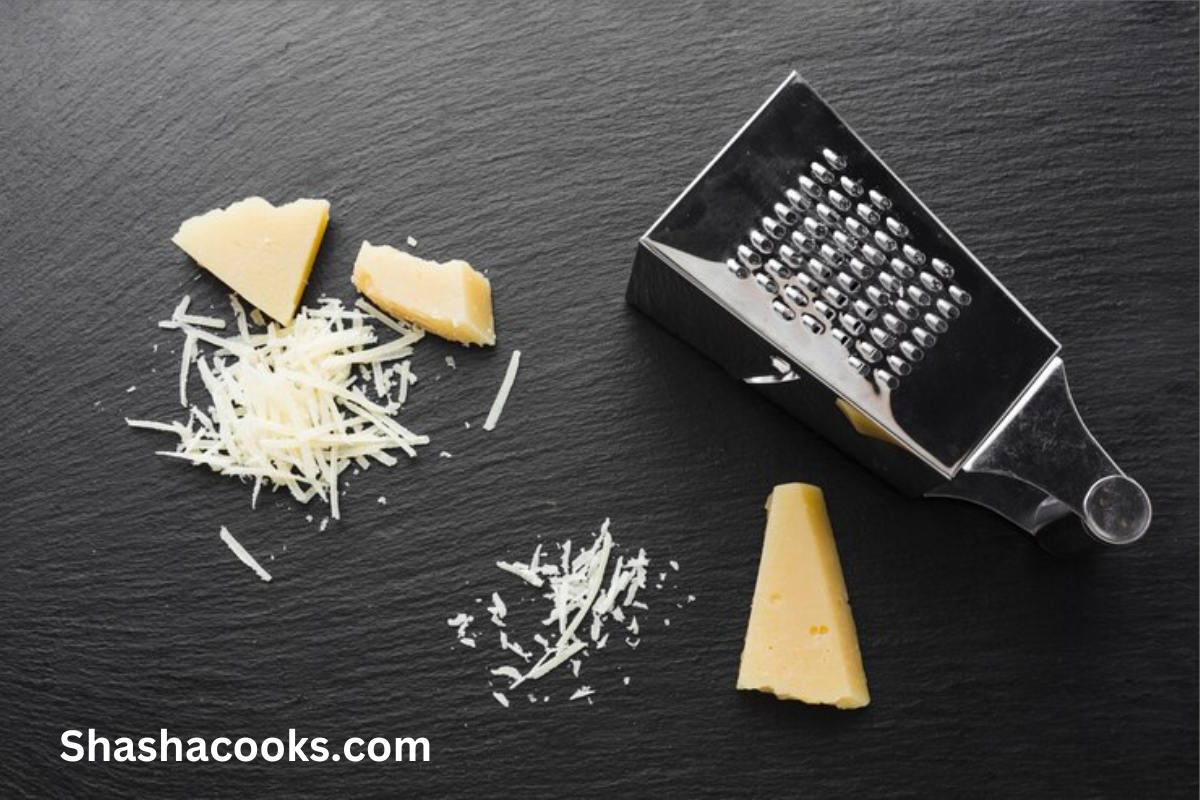
When it comes to kitchen essentials, the right cheese grater can make all the difference. Among the multitude of options on the market, the Zyliss 92705 cheese grater stands out as a versatile, efficient, and durable choice for home cooks and professional chefs alike. With its ergonomic design and high-quality materials, this grater simplifies food preparation, making it a staple in any kitchen. Whether you are grating cheese for a pizza or shredding vegetables for a salad, this grater offers convenience and precision.
What Makes the Zyliss 92705 Cheese Grater Special?
The Zyliss 92705 cheese grater is crafted with the user in mind. It’s more than just a tool; it’s designed for ease, efficiency, and durability. One of the standout features of this grater is its comfortable grip, which reduces hand fatigue during extended use. With a sharp, stainless-steel drum that effortlessly cuts through both hard and soft cheeses, this grater is perfect for a variety of kitchen tasks. It’s not only practical but also easy to clean, being dishwasher-safe and easy to disassemble for quick washing.
This cheese grater also features a compact design, making it easy to store in any kitchen drawer or cabinet. Additionally, the sleek design is modern and stylish, fitting seamlessly into any kitchen décor.
Why Choose the Zyliss Brand?
Zyliss has been a trusted name in kitchen tools for over 60 years, and their reputation for quality and innovation speaks volumes. The Zyliss 92705 cheese grater is a prime example of the brand’s commitment to producing top-notch products. Their kitchen tools are known for their durability, user-friendliness, and thoughtful designs, making cooking and food prep more enjoyable.
The Zyliss brand also offers a 5-year guarantee on its products, ensuring that the cheese grater will stand the test of time. This long-term investment in quality provides peace of mind to those looking for reliable kitchen tools.
The Ergonomic Design: Comfortable and Efficient Grating
Comfort is a key feature when selecting any kitchen tool, and the Zyliss 92705 excels in this regard. Its ergonomic handle is designed to fit comfortably in your hand, reducing strain and making it ideal for anyone who needs to grate large amounts of cheese or vegetables without discomfort. The non-slip base ensures stability while grating, allowing for a smooth, efficient experience every time.
Moreover, the grater’s compact size means it is easy to maneuver, even for users with smaller hands. This design also prevents unnecessary mess, as the grater holds the cheese securely within the drum until you’re ready to release it.
Effortless Grating with Stainless Steel Precision
What truly sets the Zyliss 92705 cheese grater apart is the quality of its stainless-steel drum. This sharp, durable drum slices through cheese like butter, offering precise and uniform results. Whether you’re working with hard cheeses like Parmesan or softer options like cheddar, this grater performs with ease.
The sharp cutting edge reduces the amount of force needed, meaning you can grate cheese quickly and with less effort than traditional flat or box graters. Additionally, the stainless-steel drum is resistant to rust and corrosion, ensuring a long lifespan and maintaining sharpness even after regular use.
Cleaning and Maintenance: Dishwasher Safe for Easy Care
Nobody enjoys the hassle of cleaning kitchen gadgets after a long day of cooking, but the Zyliss 92705 cheese grater makes it simple. It is dishwasher safe, making cleanup quick and easy. The grater disassembles easily, allowing you to clean each part thoroughly without missing any nooks or crannies where food could get trapped.
For those who prefer hand washing, the smooth surfaces and simple design mean that the grater can be rinsed clean in just a few moments. Its low-maintenance design ensures that you can spend more time enjoying your meal and less time worrying about cleanup.
Versatility: More Than Just a Cheese Grater
While the Zyliss 92705 is designed primarily for grating cheese, its versatile design allows for more than just dairy products. This grater can be used for grating chocolate, nuts, vegetables, and even zesting citrus fruits. The sharp stainless-steel drum ensures precise grating, no matter the ingredient.
This versatility makes it a valuable tool for any kitchen, whether you’re preparing a gourmet meal or a simple family dinner. With this grater, you can achieve professional-level results without needing multiple kitchen tools.
Comparing Zyliss 92705 with Other Graters
When choosing a cheese grater, it’s important to consider how it compares to other popular models on the market. The Zyliss 92705 stands out due to its ergonomic design, durability, and sharp cutting blade. Unlike traditional box graters, which can be cumbersome and difficult to clean, the Zyliss grater offers a more compact and user-friendly experience.
Box graters, while functional, often require more effort and create more mess. The Zyliss 92705, with its rotary drum design, allows for quicker and cleaner grating. Similarly, compared to handheld microplanes or flat graters, the Zyliss provides a more stable grip, reducing the risk of slips or accidents in the kitchen.
Customer Reviews and Feedback on the Zyliss 92705 Cheese Grater
The Zyliss 92705 cheese grater has received rave reviews from users, with many praising its ease of use, sharpness, and durability. Customers appreciate how quickly they can grate cheese and other ingredients without the hand strain associated with traditional graters.
Additionally, many users have noted how easy it is to clean, with both dishwasher users and those who hand wash giving positive feedback on the minimal effort required to maintain the grater. The 5-year guarantee has also been a hit with buyers, as it offers peace of mind and confidence in the product’s longevity.
FAQs
Can the Zyliss 92705 cheese grater handle hard cheeses like Parmesan?
Yes, the sharp stainless-steel drum makes grating hard cheeses like Parmesan effortless.
Is the Zyliss 92705 cheese grater dishwasher-safe?
Absolutely, it can be easily disassembled and placed in the dishwasher for easy cleaning.
Can this grater be used for other ingredients besides cheese?
Yes, it is versatile enough to grate nuts, chocolate, and vegetables, making it a multi-purpose kitchen tool.
Is the Zyliss 92705 suitable for left-handed users?
Yes, the ergonomic design is ambidextrous and comfortable for both right and left-handed users.
How durable is the stainless-steel drum?
The drum is made from high-quality stainless steel, ensuring that it is rust-resistant and remains sharp even with regular use.
Does the grater come with a warranty?
Yes, Zyliss offers a 5-year warranty on the 92705 cheese grater, covering any manufacturing defects.
Also Read: Cheese Named for an English Village NYT Tradition
Conclusion
The Zyliss 92705 cheese grater is a must-have for anyone who values efficiency, durability, and comfort in the kitchen. With its sharp stainless-steel drum, ergonomic design, and ease of cleaning, it outperforms many traditional graters on the market. Whether you’re grating cheese, zesting citrus, or shredding vegetables, this versatile tool will quickly become a staple in your kitchen.
For those looking for a high-quality, reliable cheese grater that will last for years, the Zyliss 92705 is the perfect choice. Its thoughtful design and ease of use make food preparation faster and more enjoyable, allowing you to focus on creating delicious meals.
Kitchen
The Timeless Appeal of Cast Iron Skillets: A Kitchen Essential
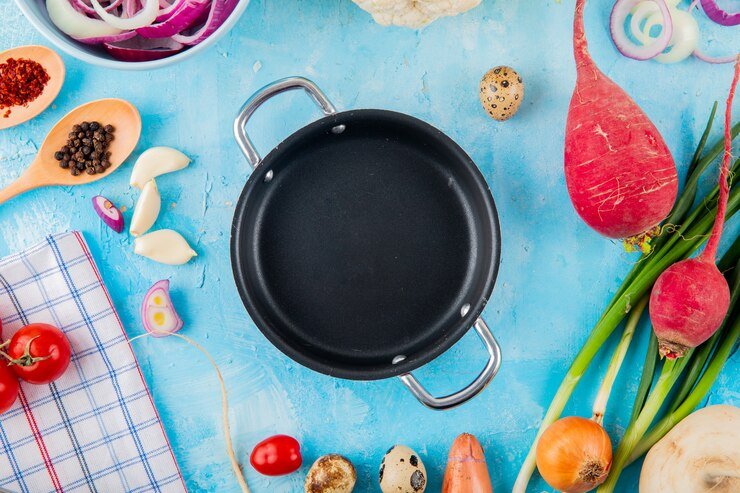
Cast iron skillets have long been revered for their durability, versatility, and superior heat retention. Whether you are a seasoned chef or a home cook, a cast iron skillet is an invaluable tool in the kitchen, capable of creating mouthwatering dishes with ease. In this article, we explore the history, benefits, and maintenance of cast iron skillets, providing insights into why they continue to be a staple in kitchens worldwide.
Introduction to Cast Iron Skillets
A cast iron skillet is more than just a piece of cookware; it is a testament to time-tested culinary tradition. Known for their robustness and even heat distribution, cast iron skillets are used to prepare a wide range of dishes, from sizzling steaks to fluffy pancakes. With proper care, these skillets can last a lifetime, becoming cherished heirlooms passed down through generations. In an era where kitchen gadgets come and go, the enduring popularity of the cast iron skillet speaks to its unmatched quality and performance.
History of Cast Iron Cookware
The history of cast iron cookware dates back centuries, with origins rooted in ancient China around the 5th century BC. As metallurgy advanced, cast iron became a preferred material for cooking due to its durability and ability to retain heat. In Europe, cast iron cookware gained prominence during the Industrial Revolution, as mass production made it more accessible to the public. By the 18th century, cast iron skillets were commonplace in American kitchens, favored for their versatility and longevity. Today, cast iron remains a beloved choice for both home cooks and professional chefs, celebrated for its ability to produce exceptional culinary results.
What is a Cast Iron Skillet?
A cast iron skillet is a heavy, flat-bottomed pan made from molten iron that is poured into a mold and allowed to cool and solidify. The result is a dense and durable piece of cookware that excels at retaining heat and distributing it evenly across the cooking surface. Cast iron skillets are known for their distinctive black patina, which develops over time through a process called seasoning. This natural non-stick surface enhances the skillet’s performance and is an integral part of its unique charm. Cast iron skillets are incredibly versatile, suitable for a variety of cooking methods, including frying, sautéing, baking, and roasting.
Benefits of Cooking with Cast Iron
Cooking with a cast iron skillet offers numerous benefits that make it a valuable addition to any kitchen:
- Heat Retention: Cast iron skillets excel at retaining heat, ensuring even cooking and excellent browning of food. This quality makes them ideal for searing meats and achieving a perfect crust on dishes.
- Versatility: From stovetop to oven, cast iron skillets can handle a wide range of cooking techniques. They are equally adept at frying, baking, roasting, and even outdoor cooking.
- Durability: Cast iron is virtually indestructible and can withstand high temperatures and rough handling. With proper care, a cast iron skillet can last for generations.
- Natural Non-Stick Surface: When properly seasoned, a cast iron skillet develops a natural non-stick coating, reducing the need for additional oils or fats in cooking.
- Affordable and Sustainable: Cast iron skillets are often more affordable than other types of cookware and are made from natural materials, making them an eco-friendly choice.
These benefits highlight why cast iron skillets continue to be a favorite among cooks seeking reliable and versatile cookware.
Choosing the Right Cast Iron Skillet
When selecting a cast iron skillet, there are several factors to consider to ensure you choose the best option for your needs:
- Size: Cast iron skillets come in various sizes, typically ranging from 6 to 12 inches in diameter. Consider the size that best suits your cooking needs and the number of people you typically cook for.
- Weight: Cast iron skillets are inherently heavy, but some models are lighter than others. Consider the weight of the skillet and how comfortable you are handling it.
- Brand: There are many reputable brands known for producing high-quality cast iron skillets, such as Lodge, Le Creuset, and Staub. Research different brands and read reviews to find a skillet that meets your expectations.
- Design: Some skillets come with additional features, such as pour spouts or assist handles, that can enhance their usability. Consider these design elements when making your choice.
By taking these factors into account, you can select a cast iron skillet that will serve you well for years to come.
Seasoning Your Cast Iron Skillet
Seasoning is a crucial step in maintaining the performance and longevity of a cast iron skillet. It involves coating the skillet with a thin layer of oil and heating it to create a natural non-stick surface. Here’s how to season your cast iron skillet:
- Clean the Skillet: Wash the skillet with warm water and a mild dish soap to remove any residue. Dry it thoroughly with a clean cloth or paper towel.
- Apply Oil: Use a high smoke point oil, such as vegetable oil or flaxseed oil, and apply a thin layer to the entire surface of the skillet, including the handle and exterior.
- Heat the Skillet: Preheat your oven to 375°F (190°C) and place the skillet upside down on the middle rack. Place a baking sheet or aluminum foil on the rack below to catch any drips. Bake the skillet for one hour.
- Cool and Repeat: Allow the skillet to cool in the oven before removing it. Repeat the seasoning process 2-3 times to build a robust non-stick layer.
Regular seasoning enhances the skillet’s performance and helps prevent rust, ensuring your cast iron remains in excellent condition.
How to Clean a Cast Iron Skillet
Proper cleaning is essential for maintaining the seasoning and longevity of a cast iron skillet. Follow these steps to clean your skillet effectively:
- Allow to Cool: Let the skillet cool slightly before cleaning to avoid thermal shock, which can cause cracking.
- Rinse with Water: Use warm water to rinse the skillet, removing any loose food particles. Avoid using soap, as it can strip away the seasoning.
- Scrub Gently: For stubborn food residue, use a soft brush or a pan scraper to gently scrub the surface. Avoid abrasive scrubbers that can damage the seasoning.
- Dry Thoroughly: Dry the skillet immediately with a clean cloth or paper towel to prevent rusting. You can also place it on a stovetop burner for a few minutes to ensure complete drying.
- Apply Oil: After drying, apply a thin layer of oil to the skillet to maintain the seasoning and protect against moisture.
By following these steps, you can keep your cast iron skillet clean and ready for its next culinary adventure.
Common Mistakes to Avoid with Cast Iron
To ensure your cast iron skillet remains in optimal condition, it’s important to avoid these common mistakes:
- Using Soap: Avoid using soap when cleaning your skillet, as it can strip away the seasoning. Stick to warm water and gentle scrubbing for best results.
- Leaving Moisture: Never leave your skillet soaking in water or store it without drying, as moisture can lead to rust.
- Overheating: While cast iron can withstand high temperatures, avoid exposing it to sudden temperature changes, such as moving it from stovetop to cold water, to prevent cracking.
- Cooking Acidic Foods: Be cautious when cooking acidic foods, like tomatoes or citrus, as they can erode the seasoning over time. If you do cook acidic foods, re-season the skillet afterward.
- Neglecting Seasoning: Regularly season your skillet to maintain its non-stick properties and protect it from rust.
By being mindful of these mistakes, you can preserve the quality and longevity of your cast iron skillet.
Cooking Techniques with Cast Iron
Cast iron skillets are incredibly versatile and can be used for a wide range of cooking techniques. Here are some popular methods:
- Searing: The high heat retention of cast iron makes it perfect for searing meats, creating a flavorful crust while locking in juices.
- Baking: Cast iron skillets can be used to bake a variety of dishes, from cornbread and pies to deep-dish pizzas and cobblers.
- Frying: The even heat distribution of cast iron is ideal for frying, ensuring consistent cooking and crispy results.
- Roasting: Use your skillet to roast vegetables or meats in the oven, benefiting from its ability to maintain a steady temperature.
- Stovetop to Oven: Cast iron skillets seamlessly transition from stovetop to oven, making them perfect for recipes that require both cooking methods.
These techniques highlight the versatility of cast iron skillets, making them an indispensable tool for any kitchen.
Popular Recipes for Cast Iron Skillets
Cast iron skillets are perfect for creating a variety of delicious dishes. Here are a few popular recipes to try:
- Skillet Cornbread: Enjoy classic cornbread with a crispy crust and moist interior, baked to perfection in a cast iron skillet.
- Pan-Seared Steak: Achieve a perfectly seared steak with a rich, caramelized crust and juicy interior, using the high heat of a cast iron skillet.
- Vegetable Frittata: Create a flavorful frittata with sautéed vegetables, eggs, and cheese, cooked evenly in a cast iron skillet.
- Deep-Dish Pizza: Make a mouthwatering deep-dish pizza with a crispy crust and melty cheese, baked in a cast iron skillet.
- Apple Crisp: Indulge in a warm apple crisp with a golden, buttery topping and tender fruit filling, baked in a cast iron skillet.
These recipes showcase the diverse range of dishes that can be prepared using a cast iron skillet, offering inspiration for your next culinary creation.
Cast Iron Skillet Maintenance Tips
To ensure your cast iron skillet remains in excellent condition, follow these maintenance tips:
- Season Regularly: Regularly season your skillet to maintain its non-stick properties and protect against rust.
- Avoid Metal Utensils: Use wooden, silicone, or plastic utensils to prevent scratching the seasoning.
- Store Properly: Store your skillet in a dry place with the lid off to prevent moisture buildup.
- Address Rust Promptly: If rust appears, scrub the affected area with steel wool, rinse, dry, and re-season the skillet.
- Use Often: Regular use helps maintain the seasoning and improves the skillet’s performance over time.
By following these tips, you can enjoy the benefits of your cast iron skillet for years to come.
Cast Iron Skillets in Professional Kitchens
Cast iron skillets are a staple in professional kitchens, valued for their durability, versatility, and consistent performance. Chefs appreciate the even heat distribution and superior searing capabilities of cast iron, making it a preferred choice for a wide range of culinary applications. From high-end restaurants to rustic bistros, cast iron skillets are used to create exquisite dishes that showcase the skill and creativity of chefs worldwide.
Cast Iron Skillet vs. Non-Stick Pans
When comparing cast iron skillets to non-stick pans, several differences stand out:
- Heat Retention: Cast iron excels at retaining and distributing heat evenly, while non-stick pans may struggle with consistent heat distribution.
- Durability: Cast iron is incredibly durable and can last for generations, while non-stick pans may wear out over time and require replacement.
- Non-Stick Properties: Cast iron develops a natural non-stick surface through seasoning, while non-stick pans rely on a chemical coating that can degrade over time.
- Versatility: Cast iron skillets can be used in various cooking methods, including baking and roasting, whereas non-stick pans are generally limited to stovetop use.
These differences highlight the advantages of cast iron skillets for those seeking reliable and versatile cookware.
Health Benefits of Cast Iron Cooking
Cooking with a cast iron skillet offers several potential health benefits:
- Reduced Need for Oil: The natural non-stick surface of seasoned cast iron reduces the need for added oils and fats in cooking, promoting healthier meals.
- Iron Fortification: Cooking with cast iron can increase the iron content in foods, benefiting those with iron deficiencies.
- Chemical-Free Cooking: Unlike non-stick pans, cast iron skillets do not contain synthetic coatings or chemicals, offering a more natural cooking experience.
These benefits make cast iron a popular choice for health-conscious cooks seeking to enhance their culinary practices.
Myths and Misconceptions About Cast Iron
Despite their popularity, cast iron skillets are often subject to myths and misconceptions. Here are a few common misconceptions debunked:
- Myth: Cast Iron is Difficult to Maintain: With proper care and regular seasoning, cast iron is easy to maintain and can last a lifetime.
- Myth: Cast Iron is Not Non-Stick: A well-seasoned cast iron skillet offers excellent non-stick properties, comparable to many non-stick pans.
- Myth: You Can’t Cook Acidic Foods in Cast Iron: While acidic foods can erode the seasoning over time, occasional use is fine if you re-season the skillet afterward.
- Myth: Cast Iron Heats Unevenly: Once heated, cast iron provides even heat distribution, making it ideal for cooking.
By dispelling these myths, cooks can confidently embrace the benefits of cast iron cookware in their kitchens.
The Versatility of Cast Iron Skillets
The versatility of cast iron skillets makes them a valuable addition to any kitchen. Whether you are searing a steak, baking cornbread, or roasting vegetables, cast iron delivers exceptional results across a wide range of cooking methods. Its ability to seamlessly transition from stovetop to oven allows for creativity and flexibility in culinary pursuits, making it a favorite among home cooks and professional chefs alike.
Cast Iron Skillets for Outdoor Cooking
Cast iron skillets are not limited to indoor cooking; they are equally well-suited for outdoor cooking adventures. Whether you are camping or grilling in the backyard, cast iron provides a reliable and versatile cooking surface. Its durability and heat retention make it ideal for cooking over open flames, allowing you to create delicious meals in the great outdoors. From breakfast scrambles to grilled meats, cast iron skillets offer endless possibilities for outdoor culinary exploration.
Restoring Old Cast Iron Skillets
Restoring and reviving old cast iron skillets can bring new life to these cherished pieces of cookware. Here’s how to restore a rusted or neglected skillet:
- Remove Rust: Use steel wool or a wire brush to remove rust and debris from the skillet’s surface.
- Clean Thoroughly: Wash the skillet with warm water and mild dish soap to remove any remaining residue. Rinse and dry thoroughly.
- Re-Season: Apply a thin layer of oil to the skillet and bake it in the oven at 375°F (190°C) for one hour. Repeat the seasoning process 2-3 times.
- Maintain: Regularly use and season the skillet to maintain its non-stick surface and prevent future rusting.
By following these steps, you can restore old cast iron skillets to their former glory and enjoy their culinary benefits once again.
Sustainability and Environmental Impact
Cast iron cookware is an environmentally friendly choice due to its durability and sustainability. Unlike disposable or short-lived cookware, cast iron can last for generations, reducing waste and the need for frequent replacements. Additionally, cast iron is made from natural materials and does not rely on synthetic coatings, making it a more eco-friendly option. By choosing cast iron, consumers can contribute to a more sustainable and environmentally conscious kitchen.
The Future of Cast Iron Cookware
As interest in traditional and sustainable cooking practices continues to grow, the future of cast iron cookware looks promising. Innovations in design and manufacturing are making cast iron more accessible and user-friendly, appealing to a new generation of cooks. From ergonomic handles to pre-seasoned surfaces, modern cast iron skillets offer enhanced features that cater to diverse culinary needs. As the culinary world evolves, cast iron remains a timeless and cherished tool, poised to continue its legacy in kitchens around the world.
FAQs about Cast Iron Skillets
What is a cast iron skillet?
A cast iron skillet is a heavy, flat-bottomed pan made from cast iron, known for its excellent heat retention and durability.
How do I season a cast iron skillet?
To season a cast iron skillet, apply a thin layer of oil and bake it in the oven at 375°F (190°C) for one hour. Repeat the process 2-3 times for a robust non-stick surface.
Can I use soap to clean my cast iron skillet?
It is best to avoid soap when cleaning a cast iron skillet, as it can strip away the seasoning. Use warm water and gentle scrubbing instead.
What are the benefits of cooking with cast iron?
Cast iron skillets offer benefits such as heat retention, versatility, durability, and a natural non-stick surface when properly seasoned.
Can I cook acidic foods in a cast iron skillet?
While occasional use of acidic foods is fine, prolonged cooking of acidic foods can erode the seasoning. Re-season the skillet afterward to maintain its surface.
How do I remove rust from a cast iron skillet?
To remove rust, scrub the skillet with steel wool or a wire brush, wash it thoroughly, and re-season it to restore its non-stick properties.
Conclusion
In conclusion, cast iron skillets are a timeless and versatile addition to any kitchen, offering exceptional performance and durability. With their rich history, natural non-stick properties, and ability to handle a wide range of cooking techniques, cast iron skillets continue to be a favorite among cooks worldwide. By embracing the benefits of cast iron cookware and following proper maintenance practices, you can enjoy the culinary delights it offers for generations to come. Whether you are searing a steak, baking a pie, or roasting vegetables, a cast iron skillet is an indispensable tool that elevates the art of cooking.
Kitchen
400 F to C: Simple Steps for Temperature Conversion
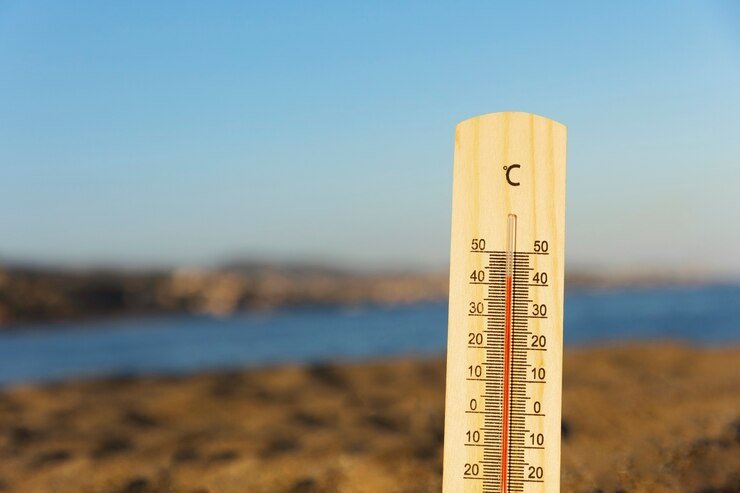
Understanding how to convert temperatures between different scales is a valuable skill. Whether you’re adjusting a recipe, preparing for a scientific experiment, or merely curious about the weather in another country, being able to switch between Fahrenheit (F) and Celsius (C) can prove essential. This comprehensive guide will walk you through the entire process of converting 400 degrees Fahrenheit to Celsius, explaining the science behind it, providing step-by-step instructions, and offering practical applications.
Introduction
Temperature conversion may seem like a trivial task, but it’s rooted in a rich history of scientific exploration and discovery. Different countries and fields of study use different temperature scales, and understanding how to navigate between them is crucial.
The transition from Fahrenheit to Celsius is particularly relevant today, as Celsius is the standard measurement in most parts of the world. The conversion of 400 F to C might come up in various contexts, including cooking, weather forecasting, and scientific research. Let’s explore why and how to make this conversion, and what it signifies in our daily lives.
Fahrenheit vs. Celsius
Historical Context
The Fahrenheit scale, developed by Daniel Gabriel Fahrenheit in 1724, was based on the temperature of a brine solution. It set the freezing point of water at 32 degrees and the boiling point at 212 degrees, using a 180-degree separation. This scale became the standard in the United States and some Caribbean countries.
Conversely, the Celsius scale, named after the Swedish astronomer Anders Celsius, was introduced in 1742. It measures the freezing point of water at 0 degrees and the boiling point at 100 degrees, providing a more straightforward approach aligned with scientific understanding.
Differences Between Fahrenheit and Celsius
The differences between these two scales can sometimes cause confusion, especially for those who travel or work in fields requiring precise measurements. While Fahrenheit offers a more detailed scale often preferred in meteorology, Celsius aligns with the metric system, making it more intuitive for scientific calculations.
Why These Scales Matter
Both scales have their significance and utility. While Celsius is the standard for scientific and international usage, Fahrenheit provides a more detailed approach, especially useful in certain practical applications like cooking. Knowing how to convert between them is key to navigating these systems seamlessly.
How to Convert 400 F to C
The Formula Explained
The formula to convert Fahrenheit to Celsius is a simple linear equation:
C=59×(F−32)C = \frac{5}{9} \times (F – 32)
In this formula, CC represents degrees Celsius, and FF represents degrees Fahrenheit. This formula provides a direct way to calculate the equivalent temperature in Celsius for any given Fahrenheit temperature.
Step-by-Step Conversion Process
Let’s convert 400 degrees Fahrenheit to Celsius using the formula:
- Subtract 32 from the Fahrenheit temperature:400−32=368400 – 32 = 368
- Multiply the result by 5/9:368×59=204.44368 \times \frac{5}{9} = 204.44
Thus, 400 degrees Fahrenheit is equivalent to approximately 204.44 degrees Celsius.
Importance of Accurate Conversion
Accuracy in temperature conversion is vital, especially in fields like science and engineering, where precise measurements can influence experimental outcomes and product quality. Even in everyday contexts, such as cooking, understanding the difference between these two scales can be the difference between success and failure.
400 F to C in Daily Life
Common Situations
There are numerous scenarios where converting 400 F to C might be necessary. Let’s examine a few practical applications:
Cooking Temperatures
In culinary arts, oven temperatures are often specified in Fahrenheit. A recipe might call for preheating the oven to 400 degrees Fahrenheit, which is roughly 204 degrees Celsius. Knowing how to make this conversion ensures that international recipes are followed accurately.
Weather Reports
Weather reports in the United States are typically given in Fahrenheit, whereas many other countries use Celsius. Understanding how to convert these temperatures can help travelers understand weather conditions abroad, ensuring proper preparation.
The Science Behind Conversion
Thermodynamics and Heat Transfer
Temperature is a measure of the average kinetic energy of particles in a substance. The principles of thermodynamics and heat transfer help us understand how temperature affects the physical state and energy of a system.
The conversion between Fahrenheit and Celsius is more than a mathematical formula; it reflects fundamental principles of heat and energy. These concepts are used in engineering, meteorology, and environmental science to describe and predict thermal behavior.
Practical Applications in Science
In scientific research, temperature is often a critical variable. Researchers must accurately convert temperatures to ensure that experiments are conducted under the correct conditions. Whether it’s measuring the boiling point of a substance or setting up a controlled environment, understanding how to convert temperatures is essential.
Tools and Resources
Online Calculators
Many online calculators are available to quickly convert temperatures from Fahrenheit to Celsius and vice versa. These tools simplify the conversion process and are especially useful for those who need to perform conversions frequently.
Apps for Conversion
Smartphone apps offer convenient ways to convert temperatures on the go. These apps provide instant access to conversion tools and additional features, such as historical temperature data and graphs.
Manual Calculation Techniques
For those interested in understanding the conversion process, manual calculation offers a hands-on approach. By using the formula and practicing with different temperatures, you can develop a strong understanding of how to convert between scales.
Understanding the Formula
The Origin of the Formula
The formula for converting Fahrenheit to Celsius is derived from the relationship between the two scales. Both scales measure the same physical quantity, but with different reference points and increments.
The formula accounts for the difference in scale and the offset between the two systems, providing a way to translate temperatures accurately.
Why Use 32 and 1.8 in Conversion?
The numbers 32 and 1.8 are essential components of the conversion formula. The number 32 reflects the offset between the freezing points of water in the two scales, while 1.8 (or 9/5) represents the ratio between the increments.
This relationship ensures that the conversion process accurately reflects the differences between Fahrenheit and Celsius.
Accuracy in Temperature
Measuring Instruments
Accurate temperature measurement relies on precise instruments. Thermometers, thermocouples, and infrared sensors are commonly used to measure temperature in various settings.
Choosing the right instrument and maintaining its calibration ensures that temperature measurements are accurate and reliable.
Avoiding Common Mistakes
Errors in temperature conversion can occur when the formula is applied incorrectly or when assumptions are made without proper verification. Attention to detail and understanding the underlying principles can help avoid these mistakes.
Significance of Decimal Points
Decimal points play a crucial role in temperature conversion, especially in scientific and industrial contexts. Small variations can have significant impacts, making it essential to consider decimal accuracy when converting temperatures.
The Impact of Temperature
Effects on Daily Life
Temperature influences many aspects of our daily lives, from the clothes we wear to the way we cook our food. Understanding temperature conversion allows us to adapt to different environments and make informed decisions.
Importance in Industrial Processes
In industries such as manufacturing, food processing, and energy production, temperature control is vital. Accurate conversion ensures that processes operate within specified parameters, maintaining quality and efficiency.
Common Mistakes and Fixes
Misconceptions in Conversion
Misunderstandings about temperature conversion often arise from confusion between the two scales or incorrect application of the formula. Education and practice can help clarify these misconceptions.
Correcting Errors
When errors occur, reviewing the conversion process and checking calculations can help identify and correct mistakes. Seeking guidance from reliable resources ensures that conversions are accurate.
Real-world Applications
Meteorology
Meteorologists rely on temperature conversion to interpret and communicate weather data. Accurate conversion is essential for predicting weather patterns and issuing forecasts.
Cooking
Chefs and home cooks often encounter recipes with temperatures in different scales. Converting these temperatures ensures that dishes are prepared correctly, preserving flavor and texture.
HVAC Systems
Heating, ventilation, and air conditioning (HVAC) systems require precise temperature control. Understanding how to convert temperatures ensures that these systems operate efficiently and maintain comfortable environments.
Also Read:
Kitchen Backsplash Ideas: Enhance Your Space with Style
FAQs
Why is 400 F to C Important?
Converting 400 F to C is crucial in various contexts, such as cooking and weather forecasting. It ensures that temperatures are understood and applied accurately across different systems.
How Do I Remember the Formula?
Remembering the conversion formula involves understanding the relationship between the two scales. Practice and familiarity with the formula can aid retention.
Can I Use an Online Calculator?
Yes, online calculators offer a quick and convenient way to convert temperatures. They provide accurate results and are accessible from any device with internet access.
Why Do We Have Two Systems?
The existence of two temperature scales reflects historical and regional preferences. Each system has its advantages and applications, contributing to its continued use.
What Are Other Temperature Scales?
Other temperature scales include Kelvin and Rankine, used in scientific and engineering contexts. Each scale has its reference points and applications.
Is Celsius More Accurate Than Fahrenheit?
Both Celsius and Fahrenheit are accurate for their intended purposes. Celsius aligns with the metric system and is used in scientific research, while Fahrenheit offers a more detailed scale for everyday use.
Conclusion
The ability to convert temperatures between Fahrenheit and Celsius is a valuable skill in our interconnected world. Whether you’re a chef, scientist, or traveler, understanding the conversion of 400 F to C enhances your ability to navigate different systems and contexts.
By mastering the formula and recognizing the significance of temperature conversion, you can ensure accuracy and confidence in your calculations. This guide has provided a comprehensive overview of the process, offering insights into the science and practical applications behind it.
As you apply this knowledge in your daily life, you’ll find that temperature conversion becomes second nature, opening new doors to understanding and exploration.
Kitchen
Kitchen Backsplash Ideas: Enhance Your Space with Style
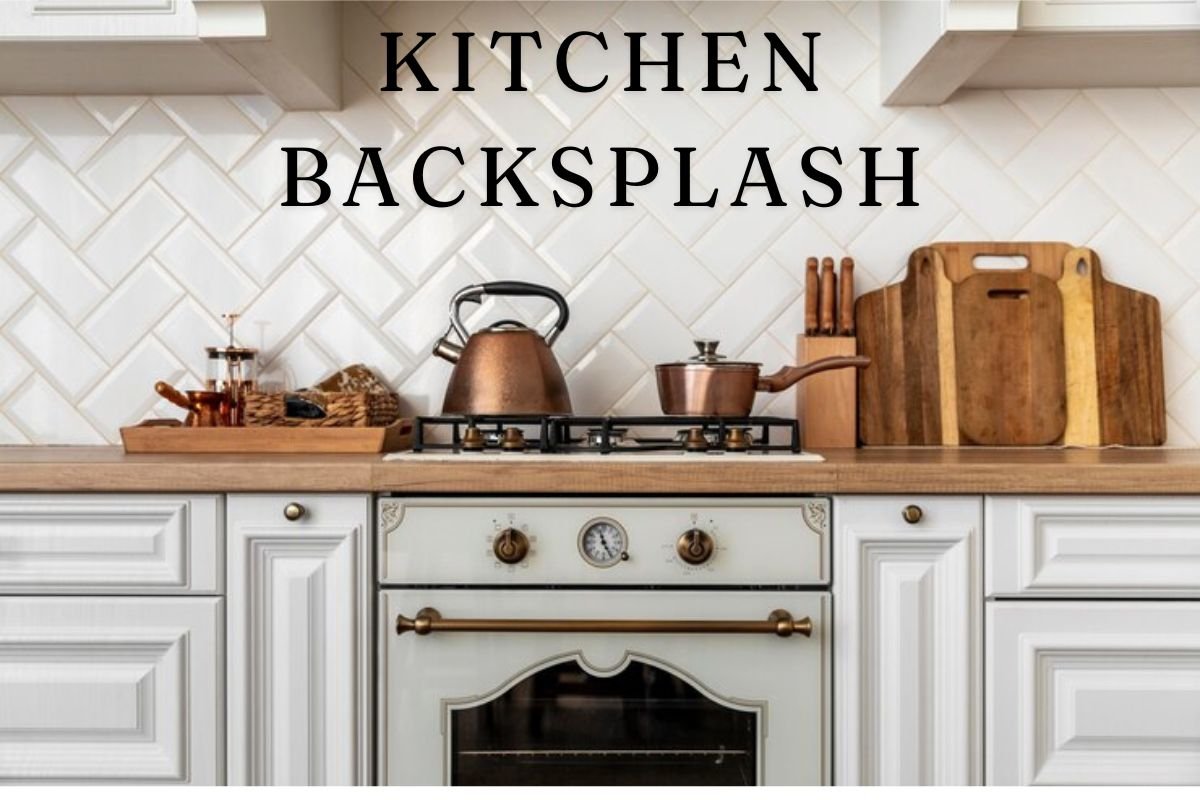
The kitchen backsplash is an essential element in any kitchen design, offering both functionality and style. Serving as a protective barrier against splashes and stains, it also adds visual interest and personality to your kitchen. Whether you’re renovating your kitchen or designing a new one from scratch, choosing the right backsplash can make a big difference in the overall look and feel of the space.
In this comprehensive guide, we’ll explore the various types of kitchen backsplashes, materials, styles, and installation tips to help you make an informed decision. We’ll also discuss the latest trends and provide practical advice for maintaining your backsplash.
Why a Kitchen Backsplash is Important
Protection Against Stains and Splashes
The primary function of a backsplash is to protect the walls behind your countertop from water, grease, and food splatters. This protection extends the life of your walls and keeps your kitchen looking clean and fresh.
Enhancing Kitchen Aesthetics
Backsplashes can transform the look of your kitchen by adding color, texture, and style. They offer a unique opportunity to express your personality and complement the overall design theme of your kitchen.
Increasing Home Value
A well-designed kitchen backsplash can enhance the appeal of your home, making it more attractive to potential buyers. It’s an investment that can increase your home’s value and marketability.
Popular Backsplash Materials
Choosing the right material is crucial to achieving the desired look and functionality of your kitchen backsplash. Here are some popular options:
1. Ceramic Tile
Pros:
- Affordable
- Available in various colors, shapes, and sizes
- Easy to clean and maintain
Cons:
- Can chip or crack if not installed properly
- Grout lines require regular cleaning
2. Glass Tile
Pros:
- Reflects light, making kitchens appear brighter
- Resistant to stains and mold
- Available in many colors and finishes
Cons:
- More expensive than ceramic
- Can be prone to scratches
3. Natural Stone
Types: Marble, granite, slate, travertine
Pros:
- Unique and elegant appearance
- Adds a luxurious touch to the kitchen
Cons:
- Requires sealing to prevent stains
- Can be expensive
4. Stainless Steel
Pros:
- Durable and easy to clean
- Heat and water-resistant
- Perfect for modern and industrial kitchens
Cons:
- Can show fingerprints and smudges
- Limited color options
5. Subway Tile
Pros:
- Classic and timeless appeal
- Versatile design options
Cons:
- May require more grout cleaning
- Can be overused in some designs
6. Peel and Stick Tiles
Pros:
- Easy to install and remove
- Budget-friendly option
Cons:
- Less durable than traditional tiles
- Limited design options
How to Choose the Right Backsplash
Selecting the perfect backsplash involves considering several factors, including your kitchen style, budget, and maintenance preferences.
Consider Your Kitchen Style
- Traditional Kitchens: Opt for classic materials like ceramic or marble.
- Modern Kitchens: Consider glass or stainless steel for a sleek look.
- Rustic Kitchens: Natural stone or brick can add warmth and character.
Evaluate Your Budget
- Low Budget: Peel and stick tiles or ceramic options.
- Mid-Range: Glass or subway tiles.
- High-End: Natural stone or custom-designed backsplashes.
Think About Maintenance
- Easy to Maintain: Glass and stainless steel require minimal upkeep.
- Higher Maintenance: Natural stone needs regular sealing and care.
Factor in Color and Texture
- Bold Colors: Can add a vibrant focal point.
- Neutral Tones: Offer a timeless appeal and blend well with any decor.
- Textured Surfaces: Add depth and interest to the kitchen.
Latest Trends in Kitchen Backsplashes
The world of kitchen design is ever-evolving, and backsplashes are no exception. Here are some of the latest trends:
Geometric Patterns
Geometric patterns are making a splash in modern kitchens. From hexagons to chevrons, these designs add a contemporary flair.
Bold Colors and Contrasts
Vibrant colors and high-contrast designs are popular choices for those looking to make a statement. Consider using bold hues to create a focal point.
Mixed Materials
Combining different materials, such as glass and metal, can add an interesting twist to your backsplash design. This trend allows for creativity and personalization.
Full-Height Backsplashes
Extending the backsplash from the countertop to the ceiling creates a seamless and dramatic look. This trend works particularly well with open shelving.
Textured Tiles
Textured tiles add depth and dimension to your kitchen. Consider using tiles with raised patterns or 3D effects for a unique touch.
Installation Tips for a Flawless Finish
Installing a kitchen backsplash can be a DIY project or a task for professionals, depending on the complexity of the design and materials used. Here are some tips to ensure a flawless finish:
1. Prepare the Surface
Ensure the wall surface is clean, dry, and smooth. Remove any old paint, wallpaper, or debris before starting the installation.
2. Measure and Plan
Accurate measurements are crucial. Plan the layout, including the placement of tiles, patterns, and any necessary cuts.
3. Use the Right Tools
Gather all necessary tools, such as tile cutters, adhesive, spacers, and grout. Having the right tools will make the installation process smoother.
4. Apply Adhesive Evenly
Use a notched trowel to apply adhesive evenly on the wall. Work in small sections to prevent the adhesive from drying out.
5. Position Tiles Carefully
Place tiles according to your design plan, using spacers to ensure even gaps. Check alignment frequently to maintain a straight layout.
6. Allow for Drying Time
Let the adhesive dry for the recommended time before grouting. This step is essential for a secure installation.
7. Seal Grout Lines
Apply a grout sealer to protect against stains and moisture. This step is especially important for natural stone tiles.
Maintaining Your Kitchen Backsplash
Proper maintenance can extend the life and appearance of your backsplash. Here’s how to keep it looking its best:
Regular Cleaning
- Daily Wipe Down: Use a soft cloth and mild detergent to clean the surface.
- Deep Cleaning: Remove stubborn stains with a baking soda and water paste or a vinegar solution.
Grout Maintenance
- Sealing: Apply a grout sealer annually to prevent stains.
- Cleaning: Use a grout cleaner or a mixture of baking soda and water to remove dirt and mildew.
Preventing Damage
- Avoid Harsh Chemicals: Use gentle cleaning products to avoid damaging the surface.
- Address Spills Promptly: Clean up spills immediately to prevent staining.
Also Read: Cheesecloth: A Versatile and Essential Kitchen Tool
Frequently Asked Questions (FAQ)
1. What is the most durable backsplash material?
Stainless steel and glass tiles are among the most durable materials, offering excellent resistance to heat, water, and stains.
2. How much does it cost to install a kitchen backsplash?
The cost varies based on the materials used and the complexity of the design. On average, homeowners spend between $1,000 and $3,000 on installation.
3. Can I install a backsplash over existing tiles?
Yes, it’s possible to install a new backsplash over existing tiles, provided the surface is clean and the tiles are in good condition.
4. How do I choose the right backsplash color?
Consider your kitchen’s color scheme, cabinetry, and countertops. Neutral tones offer timeless appeal, while bold colors can make a statement.
5. Is it necessary to seal a backsplash?
Sealing is essential for natural stone tiles to protect against stains and moisture. Other materials like ceramic and glass may not require sealing.
6. Can I use wallpaper as a backsplash?
While wallpaper is not as durable as traditional backsplash materials, it can be used as a temporary and budget-friendly option. Choose moisture-resistant wallpaper for best results.
7. What is the best way to update an old backsplash?
Consider painting over existing tiles, applying peel-and-stick tiles, or adding a new layer of tile over the old backsplash for a quick update.
Conclusion
The kitchen backsplash is more than just a protective barrier; it’s a design element that can enhance the beauty and functionality of your kitchen. By understanding the various materials, styles, and trends, you can choose a backsplash that perfectly complements your kitchen design and meets your practical needs.
Whether you opt for a classic subway tile or a bold geometric pattern, remember that the key to a successful backsplash is careful planning and attention to detail. With the right choices and proper maintenance, your kitchen backsplash will remain a stunning focal point for years to come.
Feel free to share your experiences or questions about kitchen backsplashes in the comments below. Happy designing!
-

 FOOD2 months ago
FOOD2 months agoNasi Uduk
-
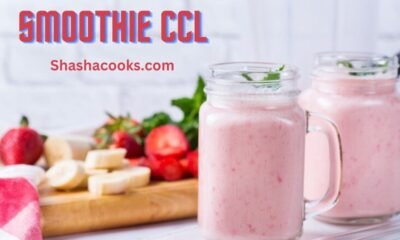
 Recipes2 months ago
Recipes2 months agoSmoothie CCL: A Delicious and Nutritious Trend
-

 BLOGS2 months ago
BLOGS2 months agoUnveiling the Innovation: BoltBól – Revolutionizing Accessibility and Mobility
-

 Recipes2 months ago
Recipes2 months agoThe Ultimate Bug Juice Camp Drink Recipe for Fun and Flavor
-
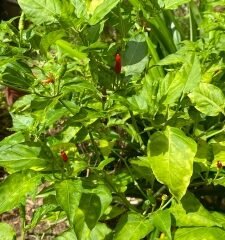
 FOOD2 months ago
FOOD2 months agoCommon Malay Ingredient List
-

 FOOD2 months ago
FOOD2 months agoCornflake Meringue Cookies
-

 FOOD2 months ago
FOOD2 months agoÇeciir: A Journey Through Turkish Cuisine
-
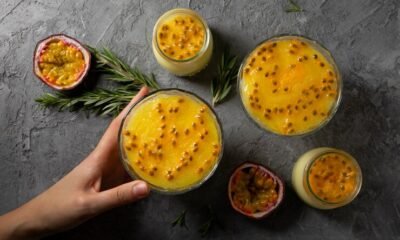
 Recipes2 months ago
Recipes2 months agoCrab Brulee Recipe: A Gourmet Delight
